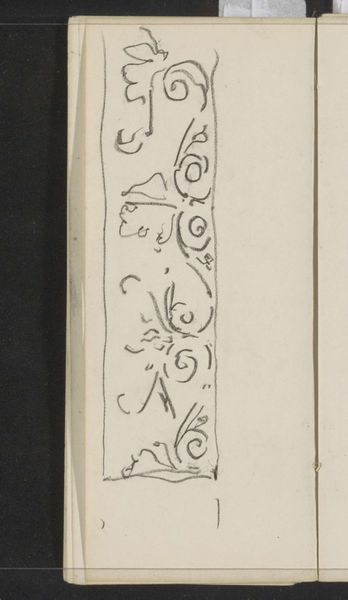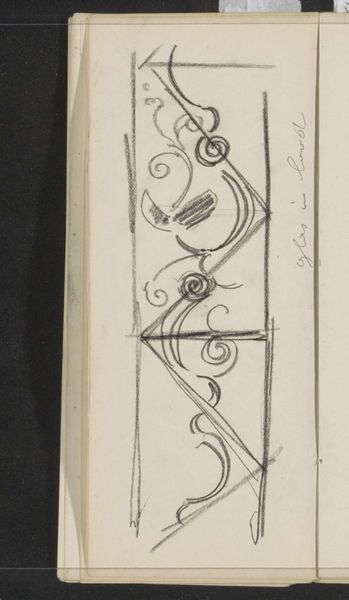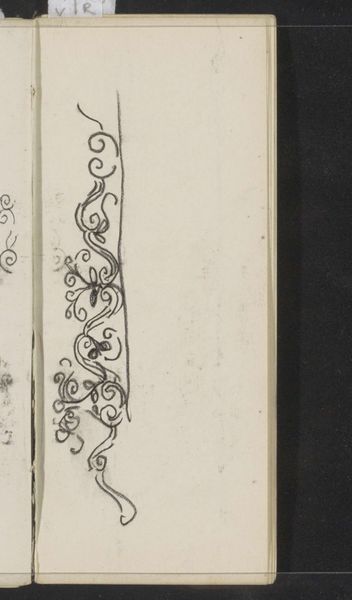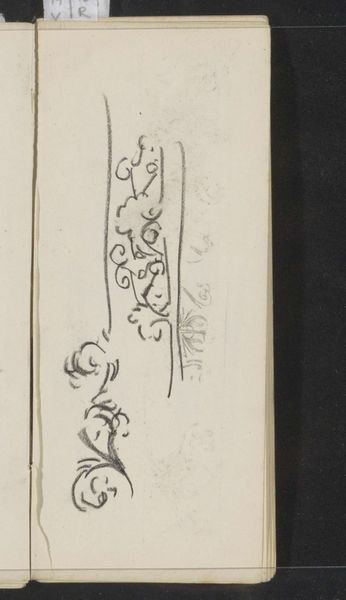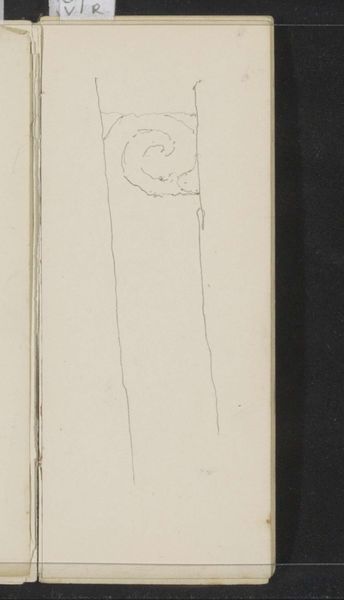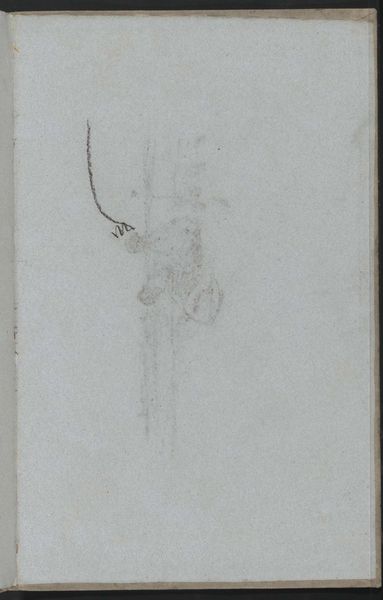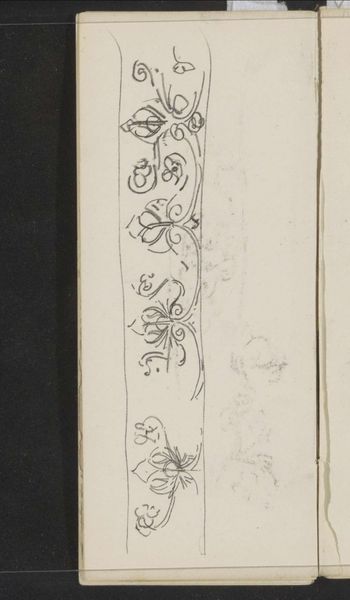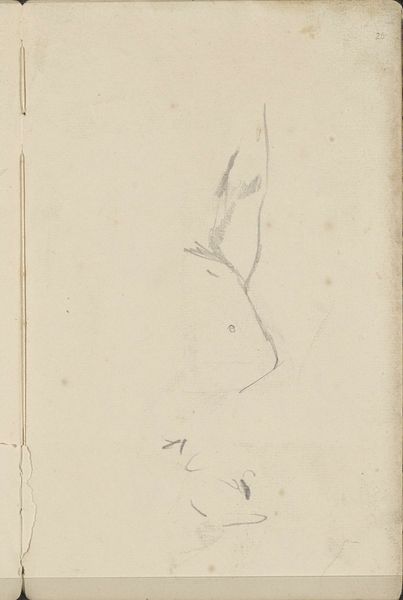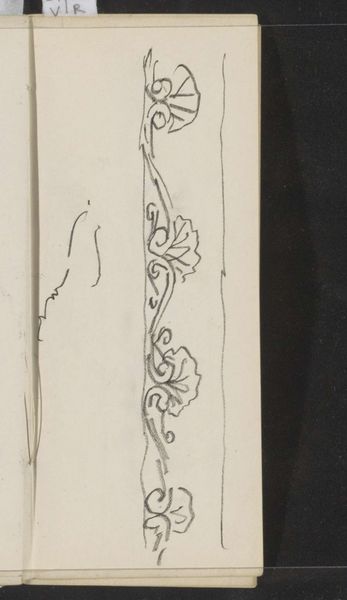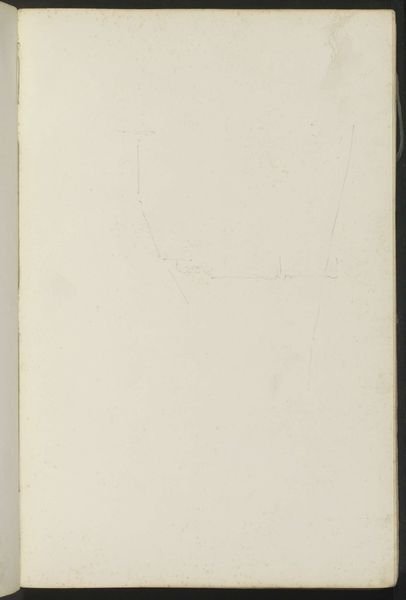
drawing, ornament, pencil
#
drawing
#
amateur sketch
#
aged paper
#
ornament
#
light pencil work
#
hand written
#
hand drawn type
#
hand lettering
#
personal sketchbook
#
fading type
#
geometric
#
pencil
#
line
#
sketchbook drawing
#
sketchbook art
Copyright: Rijks Museum: Open Domain
Editor: This drawing, titled "Ornament," is attributed to Gerrit Willem Dijsselhof and was created sometime between 1876 and 1924. It appears to be a pencil sketch on aged paper, and strikes me as delicate and quite personal, like a page torn from a sketchbook. What do you see in this piece? Curator: Well, looking at this work, I immediately consider the social context in which such an "ornament" would be produced. Pencil sketches like this, especially those seemingly intended for larger ornamental works, challenge the traditional hierarchy of art. Was this sketch part of a larger design intended for mass production? It is important to think about who the end users of this kind of ornament design would have been, their social standing, access to decorative commodities and consumption of art products at the time. Editor: That's a fascinating point! I hadn't considered the broader context of production. You're suggesting it wasn't simply about personal expression, but perhaps something more tied to industry or craft? Curator: Precisely. The very notion of "ornament" also raises questions. How was "Ornament" categorized during Dijsselhof's lifetime? As fine art or something else altogether? We need to examine the materials, like the paper and pencil, as signifiers of cost and availability. Where might this paper have been manufactured and at what price, considering who could afford to sketch in such books at all? These choices determine access to production and consumption for both maker and user. Editor: That makes me think about accessibility and value too. So, it's not just about the beauty of the design itself, but the whole system surrounding its creation and potential use. It moves beyond a simple aesthetic judgment. Curator: Exactly. By focusing on process, material, and the socioeconomic realities surrounding the artwork, we get a richer understanding of its cultural value, or even the constraints on artistic possibility during this period. Editor: Thank you, I now have a better sense of the drawing beyond what my eyes first perceived! Curator: Indeed. By viewing art as deeply entrenched within a material network of production and usage, our comprehension moves beyond mere appreciation of artistic form and moves us into appreciating its cultural place.
Comments
No comments
Be the first to comment and join the conversation on the ultimate creative platform.
